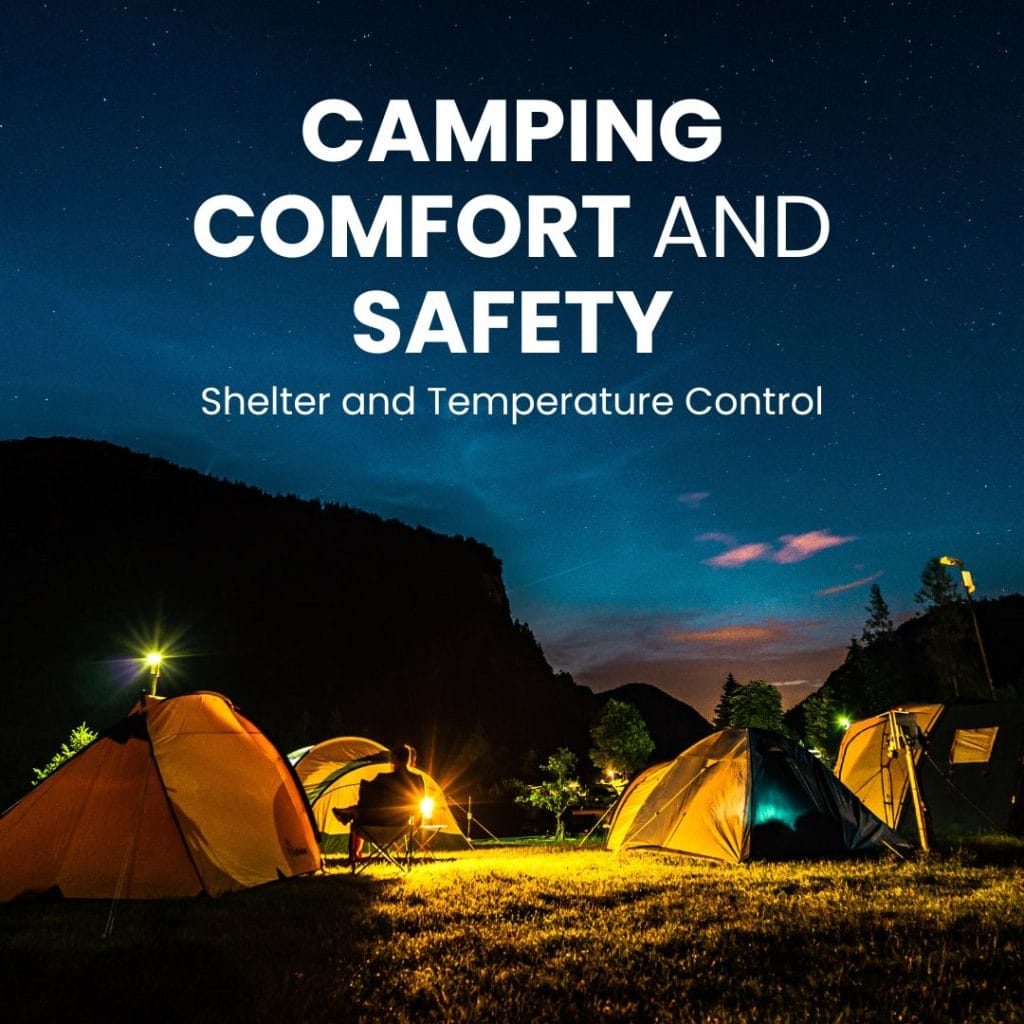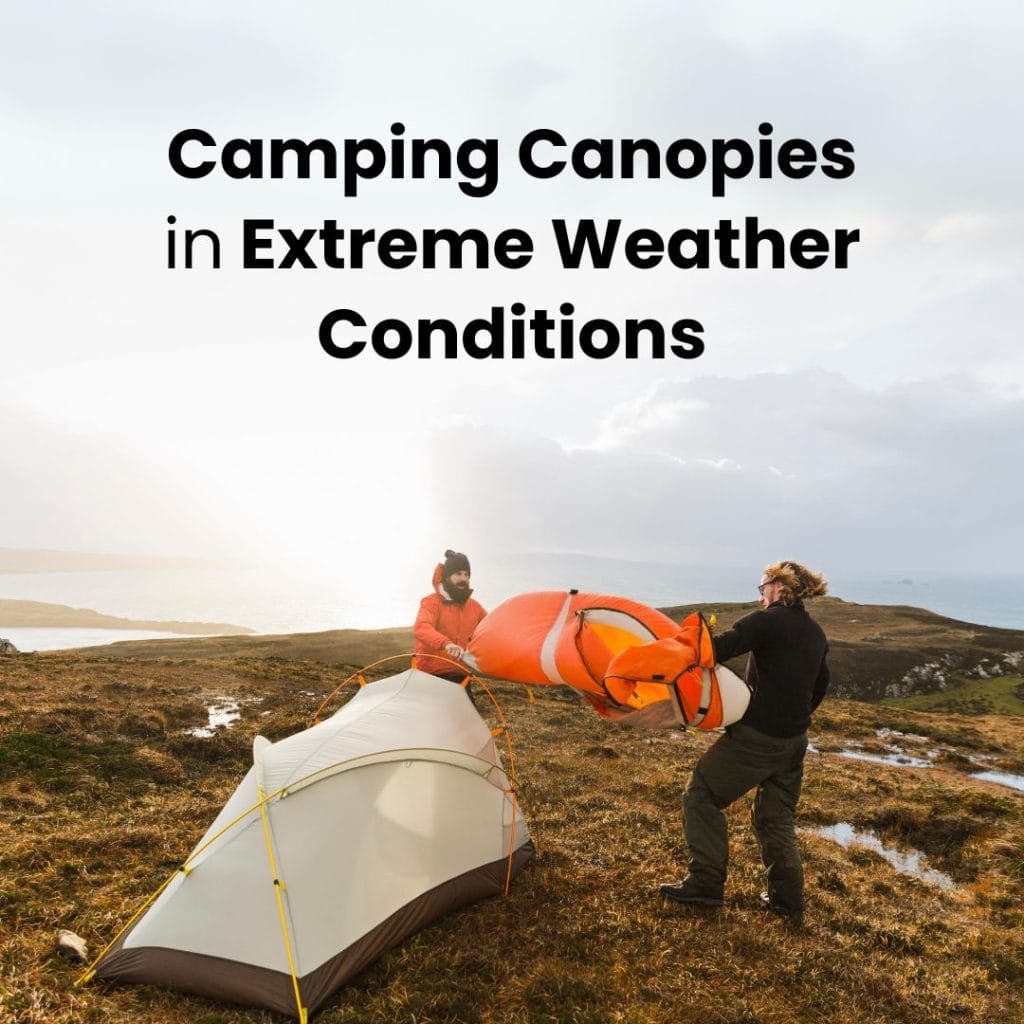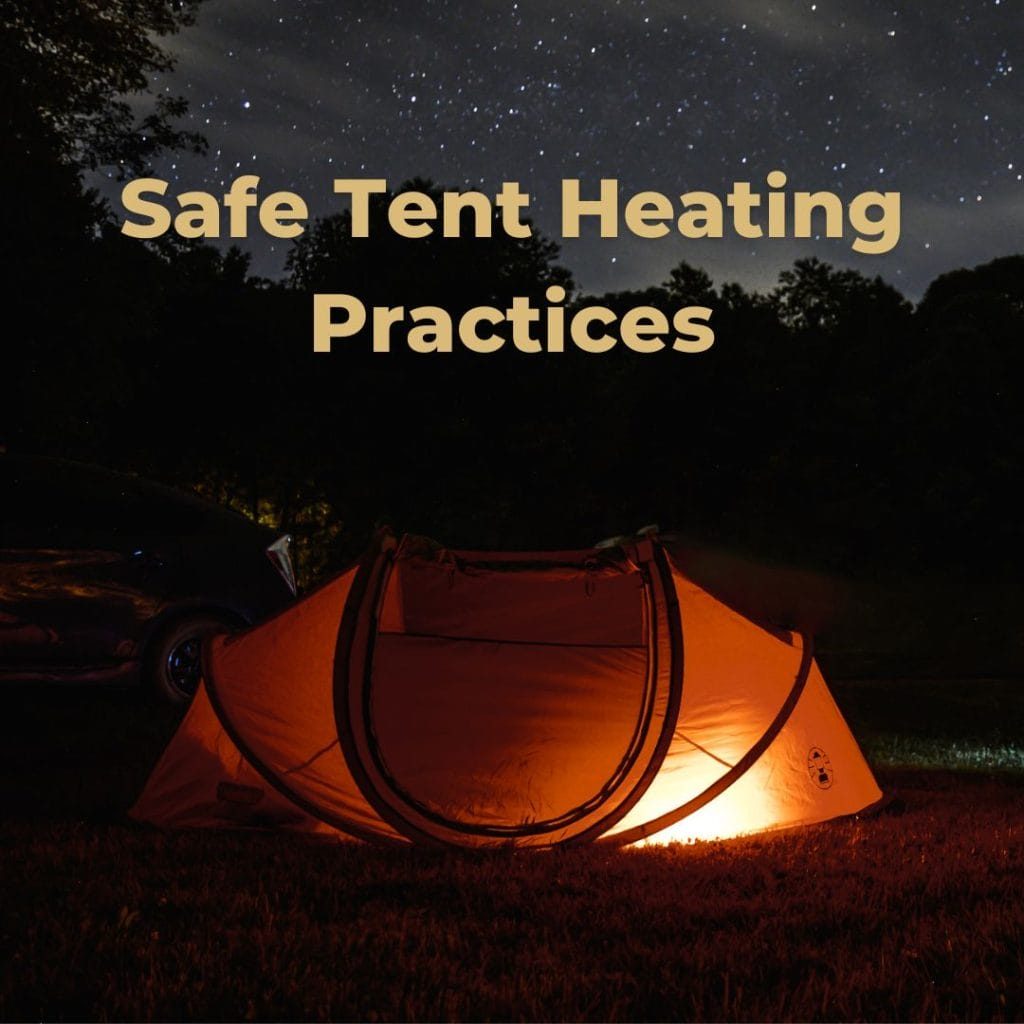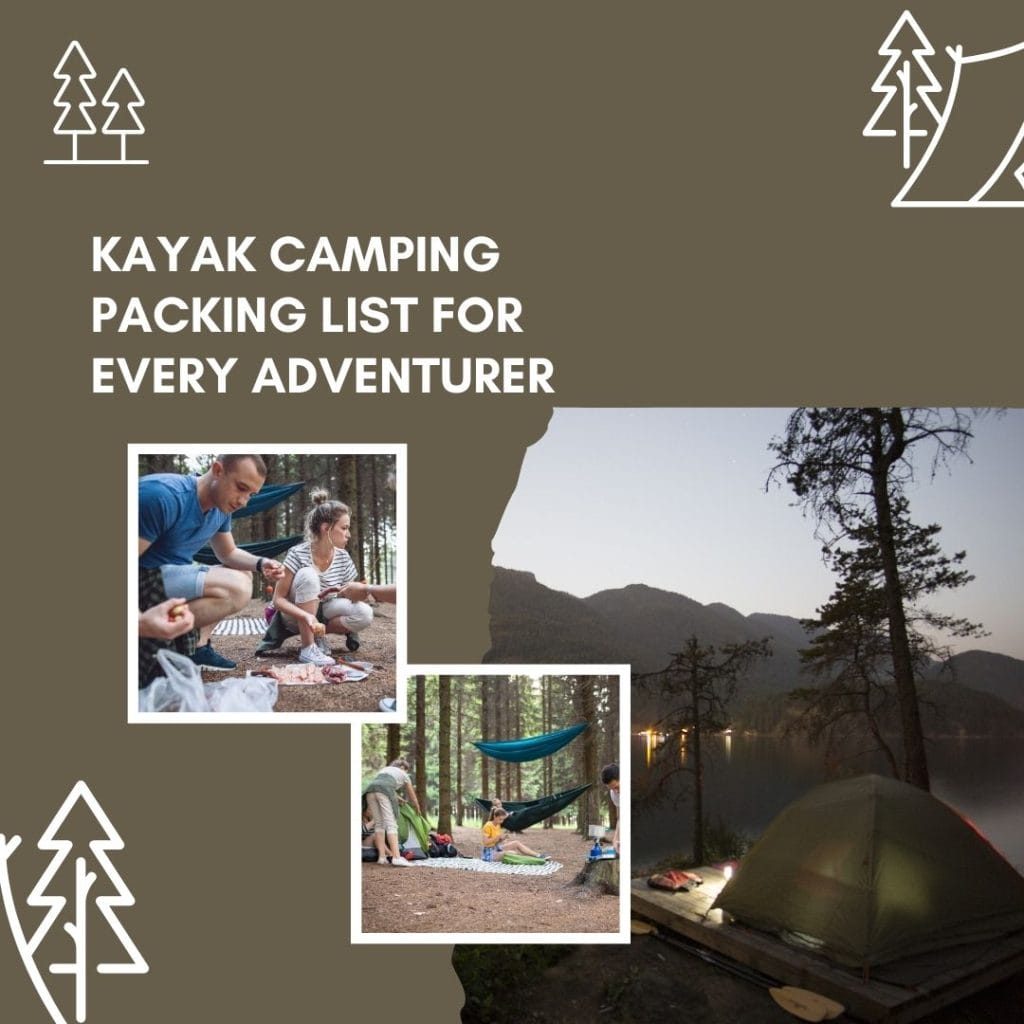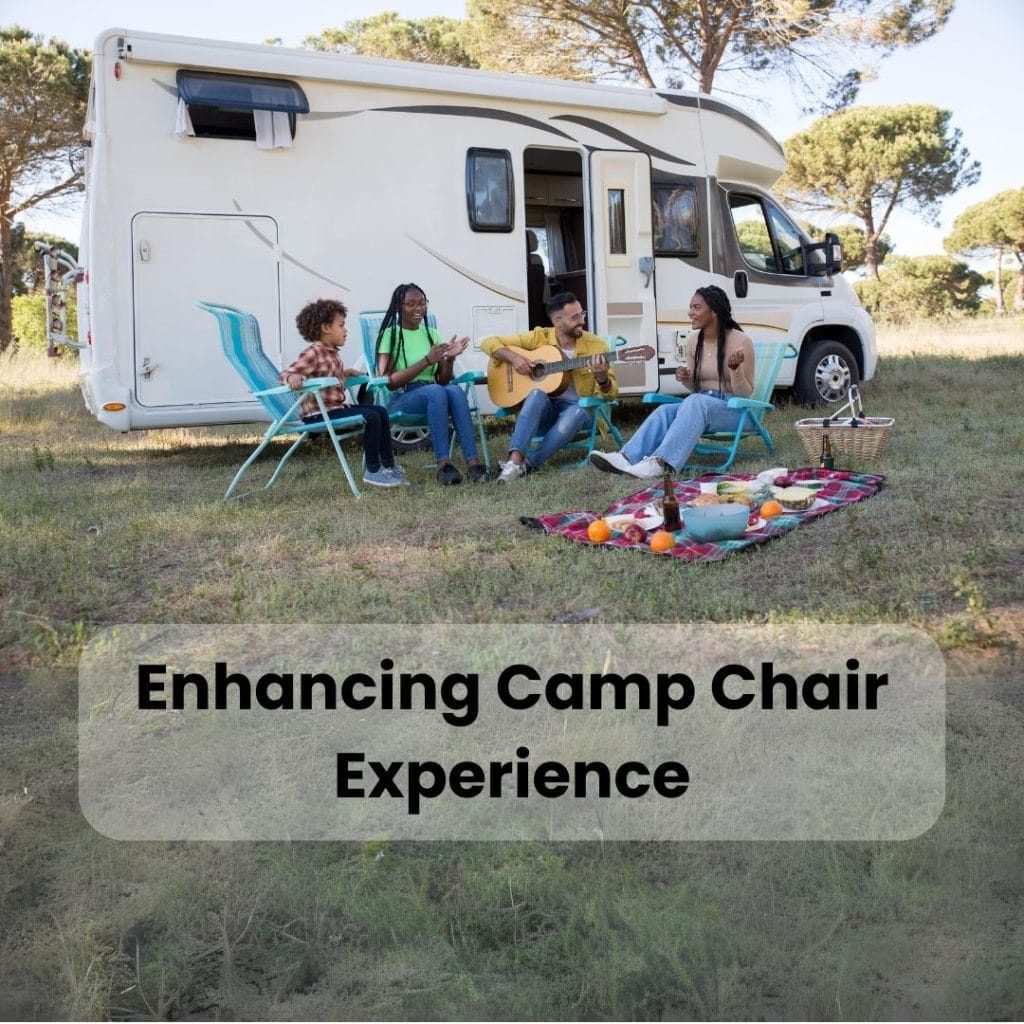Winter camping presents unique challenges, not least of which is keeping the tent warm. Effective tent heating techniques can make or break your winter camping experience, transforming it from a shivering ordeal into a cozy adventure. This guide will explore various winter camping tent heating methods, ensuring your accommodation amidst the snow is as comfortable as can be.
Effective Tent Heating Techniques for Winter Camping
Winter camping presents its own unique set of challenges and rewards. One of the primary obstacles faced by campers is maintaining a comfortable and safe temperature within the tent. This guide provides insights into effective tent heating techniques for winter camping, ensuring you stay warm despite the plummeting temperatures outside.
How to heat a tent without electricity
When it comes to maintaining warmth in a tent without the use of electricity, there are several viable and safe options at your disposal. Ruling out the perilous idea of lighting a fire within your tent, one such method involves the concept of thermal mass. Thermal mass refers to a material’s capacity to absorb, retain, and gradually release heat from a heat source, which could be the sun, a campfire, and so forth. Examining the chart below, which displays the thermal mass numbers of commonly-used materials, it’s evident that water reigns supreme in terms of thermal mass. Now, let us explore how we can leverage the excellent thermal property of water to heat our winter camping tent safely and effectively.
Using Water Bottles to Heat Your Tent
Farmers often use the concept of thermal mass to heat large greenhouses by utilizing barrels and water. This idea can be downsized to fit the needs of winter camping. To implement this method, you’ll need hard plastic or metal bottles, capable of withstanding high-temperature water. Standard supermarket plastic bottles won’t suffice due to the heated water.
You’ll also need a boiling pan or equivalent to heat the water, and, of course, a source of fire. Remember, the larger the bottle’s volume, the longer it can retain and release heat. Once the water is heated to near boiling point, carefully transfer it into your bottles.
Place these bottles throughout your tent. They should radiate heat for several hours, gradually increasing the overall temperature within your tent. The high density of water means that you might even wake up to find the bottles still warm. If they’re not as hot as you’d like during the night, drawing a few close can help warm you up. This method has proven highly effective and, in my experience, is the safest way to heat a small tent during winter camping.
Heating rocks to keep the tent warm
A slightly different approach to the water bottle method is heating large rocks to warm your tent during winter camping. This technique can heat the tent even faster than the water bottles, however, rocks don’t retain heat for as long.
Let’s break down how this method works. Begin by locating rocks around your camping area. If you’re having trouble, the best places to find them are typically near streams or rivers. Once you’ve gathered your stones, start a fire and place them close, but not directly in the fire – you don’t want charred stones in your tent!
Approximately half an hour before bedtime, carefully wrap the heated stones in a cloth or some textile material. Be cautious during this process as the stones can be exceedingly hot. Distribute these wrapped, hot rocks throughout your tent, concentrating on corners and spaces where they are less likely to be touched.
Ensure the stones are properly wrapped to prevent the heated rocks from melting the tent canvas. Though they cool down in about 3-4 hours, they release heat faster than the water bottles, providing a powerful, immediate warmth. Coupled with warm clothing, this method can significantly improve comfort levels in your tent. Depending on the outdoor temperature, you might enjoy a cozy, warm night until the next morning.
Utilizing Tent Insulation
In tandem with the techniques mentioned above, tent insulation significantly enhances the retention of warmth inside your winter camping tent. The main objective of insulating a tent is to contain the warm air within and reflect the heat back towards you. If the outdoor temperatures aren’t excessively low, adequate insulation can ensure the tent maintains a comfortable temperature, relying solely on your body heat. For a more detailed guide on this effective tent heating technique, you can explore my post detailing various methods to insulate your tent for winter camping.
Setting Up Your Tent Over a Campfire Remnant
A surprisingly effective but lesser-known method of winter camping tent heating involves setting up your tent over the remnants of a campfire. This technique leverages the heat retained in the ground long after the fire has died out, providing a gentle and lasting warmth throughout the night.
Preparation
Choose and prepare your campfire spot carefully during the day. The location should be flat and large enough to accommodate your tent. Mark the spot where you’ll be pitching your tent and build the campfire at that exact location. Ensure the fire is safe, controlled, and not too large to prevent it from becoming a fire hazard or causing damage to the ground underneath.
Execution
Let the fire die out naturally or extinguish it carefully a few hours before setting up your tent. Remember, safety is paramount. Ensure there are no live embers or sparks left, and the ground has cooled sufficiently to be safe but is still warm.
Setting Up the Tent
Once the spot has cooled down to a safe temperature but the ground still feels warm to touch, begin setting up your tent. This warmth retained in the ground will radiate upward, making your tent a cozy abode even in freezing temperatures.
Caution
While this method can effectively keep you warm, it’s critical to take all necessary precautions to prevent any fire-related accidents. Always check the fire is completely out and the ground has cooled down enough before setting up your tent.
Electric heaters for tents
For larger tents that require substantial heating during frigid winter nights, reverting to modern technology might be the most viable solution. However, the safety of any heating device employed in your tent needs to be your prime concern. After all, the ultimate goal of camping is to immerse oneself in the tranquility of nature, enjoy quality time with loved ones, and secure a peaceful night’s rest.
The last thing you desire is the constant worry of coming into contact with a scorching radiator. Or the incessant fear of your tent possibly catching fire due to the heating devices in use. So, let’s delve into a few safe, electric heating options that can be utilized effectively within a tent.
Use an electric blanket to keep you warm
One efficient and safe heating option for winter camping is utilizing an electric blanket. Electric blankets are designed with embedded heating wires that use electricity to generate heat. When powered on, the heat generated by the wires spreads evenly across the surface of the blanket, providing consistent warmth to your body.
Before heading out for your camping trip, ensure that the electric blanket is fully charged or that your campsite provides an electricity supply for the blanket. Note that some electric blankets are specifically designed for camping and operate on a low voltage for added safety.
Electric blankets offer individualized comfort, allowing you to adjust the heating levels according to your preference. They also heat up quickly, meaning you won’t have to wait long to feel the warmth seep in. The heated blanket not only keeps you warm but also adds a layer of insulation to your tent, contributing to the overall heat retention.
Remember, safety is paramount. Do not leave the blanket unattended when turned on. Always turn it off when not in use. It’s also essential to keep the blanket dry at all times to prevent any electrical accidents.
Investing in a good quality electric blanket can be a game-changer for your winter camping experience. The comfort of a warm bed, even amidst the snowy outdoors, can make your camping adventure more enjoyable and memorable.
Underfloor heating carpets to use with your tent
Underfloor heating carpets, or heated rugs, provide an innovative method of tent heating during winter camping. These specialty items use electric cables woven into the fabric to radiate heat upward, providing a warm and cozy surface underfoot.
Installing these carpets is straightforward. Simply roll them out on the tent floor before setting up your sleeping equipment. Ensure the cord extends out of the tent’s entrance to connect to an external power supply.
It’s important to note that safety measures are paramount when using these heating solutions. Always ensure the carpet is completely dry before turning it on and promptly unplug it when not in use.
In essence, underfloor heating carpets offer a safe, effective, and comfortable way to augment the temperature in your winter camping tent, making the experience more enjoyable and memorable.
Portable electric radiators
Portable electric radiators can serve as a viable heating method for a winter camping tent. They are compact, easy to carry, and provide a constant heat output, making them particularly useful for keeping larger tents warm in chilling outdoor temperatures.
However, it’s essential to use these devices with caution due to their high heat output. Always ensure your tent is well ventilated when the radiator is in use to prevent overheating and potential fire hazards.
Select a radiator with an automatic shut-off feature for added safety, which turns the device off if it tips over or overheats. Moreover, keep the radiator away from flammable materials and never leave it unattended when switched on.
What not to use to heat your tent
Propane Heaters
While propane heaters are commonplace in many camping settings, they are not recommended for use within a tent due to the associated risks. Propane heaters produce toxic fumes such as carbon monoxide which can be lethal in an enclosed space like a tent. Furthermore, propane heaters also pose a fire risk, especially in a confined space with flammable materials.
Open Flames
It might seem like a good idea to bring the campfire inside your tent to stay warm, but this is an absolute no-go. Open flames are a significant fire hazard, as the tent material can easily catch fire. Also, similar to propane heaters, open flames can produce harmful gases which may cause carbon monoxide poisoning.
Charcoal Heaters
Like propane heaters, charcoal heaters emit carbon monoxide, a odorless, colorless gas that can cause sickness or even death in high concentrations. Never use a charcoal heater in an enclosed space like a tent.
Alcohol or Oil Lamps
While they can provide both light and heat, alcohol or oil lamps should not be used inside a tent. The open flame can easily ignite the tent material, and these lamps can also tip over, causing a fire. Additionally, they produce fumes which can be harmful or lethal when used in enclosed spaces.
Remember, safety should always be your utmost priority when camping, especially during winter. Always choose heating options that are safe and specifically designed for use in enclosed spaces like tents.
Conclusion
In conclusion, it is crucial to select safe and efficient methods for your winter camping tent heating needs. Electric blankets, underfloor heating carpets, and portable electric radiators are commendable options that can ensure a warm and cozy camping experience. However, it’s essential to use these devices responsibly and prioritize safety over convenience. Always avoid heating options like propane heaters, open flames, charcoal heaters, and oil lamps that pose significant risks. Remember, a memorable winter camping experience is one where safety and comfort go hand in hand.

